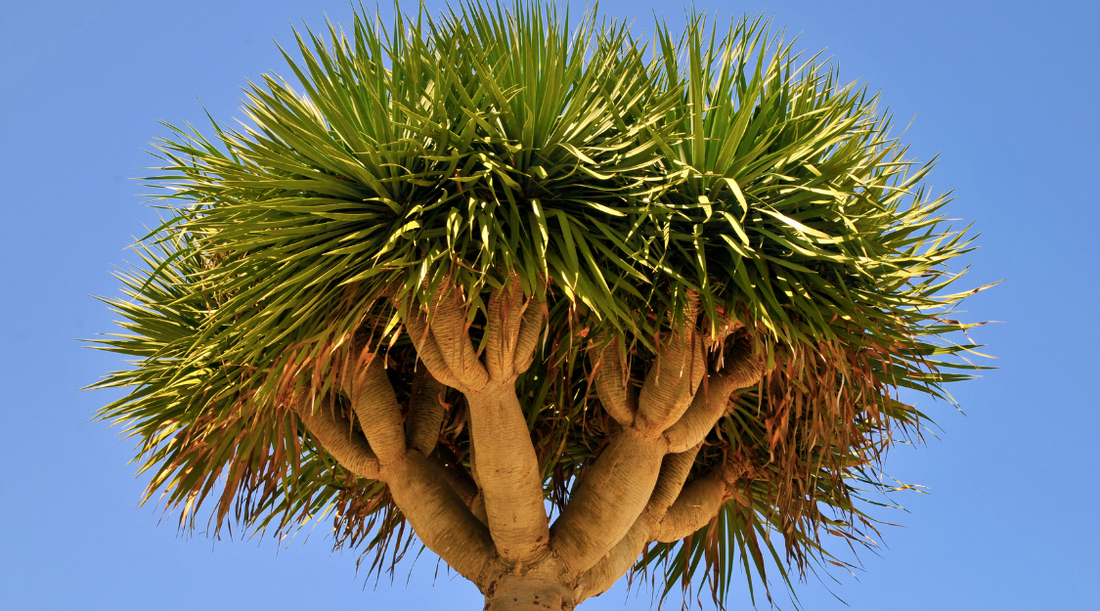
The Top 4 Modern Xeriscape Backyard Ideas
Justin BrooksIntroduction to Xeriscaping
Xeriscaping, the art of creating landscapes that reduce or eliminate the need for irrigation, isn't just a gardening trend; it's a lifestyle shift that harmonizes with nature. This sustainable approach to gardening uses drought tolerant plants, efficient irrigation systems, and thoughtful design to create a lush oasis that conserves water and thrives in its local environment. Imagine transforming your backyard into a serene sanctuary that not only conserves precious resources but also provides a year-round, vibrant retreat. Plants Express can make this dream a reality with our xeriscape backyard ideas.
What is Xeriscaping?
Xeriscape landscaping is the resource-central practice of designing landscapes to minimize water use. These backyards burst with life, color, and texture, showcasing the beauty of nature's resilience.
Xeriscaping goes beyond choosing the best types of palm trees in California for your garden. It offers a practical yet elegant method of water conservation, proving that you can have lush, beautiful outdoor spaces without the heavy water use of traditional landscaping.
Planning Your Modern Xeriscape Backyard
Assessing Your Space
Every inch of your garden holds potential. Begin by understanding the unique characteristics of your backyard: note the sunny and shady areas, soil type, and existing vegetation. This initial assessment lays the groundwork for a xeriscape landscape that complements your home and thrives in its natural setting.
Soil Preparation and Amendments
Healthy soil is the foundation of a thriving xeriscape garden. Incorporating organic matter into the soil improves its structure, enhancing water retention and drainage, which is vital for drought-resistant plants. A well-prepared soil bed encourages deep root growth, essential for plants to withstand dry conditions.
Selecting Xeriscape Plants
Choosing the right plants is at the heart of xeriscaping. Opt for native and drought-resistant species that are well-adapted to your region’s climate. Plants like the Marina Strawberry Tree Standard, Carolina Cherry Laurel, and the Jacaranda Tree mitigate water usage and bring texture and color to your garden year-round.
Design Ideas for Xeriscape Backyards
Whether you prefer the stark elegance of desert landscapes or the clean, contemporary lines of modern designs, xeriscaping offers endless possibilities to craft a garden that suits your style while conserving resources.
- Desert Landscapes: Embrace the rugged beauty of the desert with plants that thrive in arid conditions. The Desert Museum Palo Verde and Blue Ice Arizona Cypress provide striking silhouettes and year-round color, creating a dynamic, drought-tolerant tableau that captures the essence of the desert.
- Modern Minimalist Gardens: For those who lean towards a minimalist aesthetic but can't afford the water usage of a grass lawn, modern xeriscaping is just for you. Use sleek lines and a restrained plant palette, featuring species like the Marina Strawberry Tree Multi and Semi-Fruitless Wilson Olive (along with the Multi version), to create a serene, uncluttered space that emphasizes form and texture.
- Tropical Oasis: You can still achieve a lush, tropical look with xeriscaping. Opt for plants like the Canary Islands Dragon Tree and Windmill Palm, which offer a tropical appearance while being adaptable to less frequent watering.
- Native Plant Haven: Celebrate the beauty of native flora with a garden that pays homage to your local ecosystem. Native plants, such as the Coast Live Oak and Valley Oak Tree, are naturally adapted to local conditions, promoting biodiversity and offering a haven for wildlife. Add an edible element with the Arbequina Olive Tree.
Plant Selection and Placement
Strategically placing your plants according to their water needs and sun requirements maximizes the efficiency of your xeriscape. For example, plant the Manzanillo Fruiting Olive Multi and the Mission Fruiting Olive Multi in close proximity since they have similar needs. Place more needy plants around the pool. This thoughtful planning reduces water use and ensures each plant thrives in its niche.
Hardscaping Elements in Xeriscaping
Hardscaping, the use of non-plant elements like rocks, gravel, and pavers, complements the California drought tolerant plants. These materials reduce water use and maintenance while adding visual interest and functionality to your garden. Paths, walls, and patios become both aesthetic features and practical solutions in a xeriscape landscape.
Maintenance and Care for Xeriscape Gardens
Implementing Water-Efficient Irrigation Systems
Efficient watering is key to a successful xeriscape. Drip irrigation, soaker hoses, and rainwater harvesting systems deliver water directly to the plant roots, minimizing waste and ensuring deep, healthy growth. These systems can be fine-tuned to meet the exact needs of your plants, further enhancing the sustainability of your garden.
Mulching and Ground Cover
Mulch is the unsung hero of the xeriscape garden, conserving moisture, regulating soil temperature, and reducing weed growth. Organic mulches, such as shredded bark or compost, enrich the soil as they decompose, adding nutrients and improving soil structure. Ground cover plants, like sedums or creeping thyme, provide similar benefits, creating a living carpet that protects and nourishes the soil.
Pruning and Weeding
Selective pruning, like trimming a palm tree, helps maintain plant health and shape, encouraging airflow and growth in xeriscape landscapes. Weeding, though less frequent in well-designed xeriscapes, remains important to prevent competition for water and nutrients. A little attention goes a long way in keeping your garden vibrant and productive.
Seasonal Care Tips
Modern xeriscape backyards evolve with the seasons, and understanding this cycle can enhance your garden's performance and longevity. Spring and fall are ideal times for planting and major landscape changes, taking advantage of milder weather and natural rainfall. Summer is for enjoying the fruits of your labor, with minimal watering and upkeep, while winter is the time to plan and prepare for the year ahead.
Conclusion
Gardening a xeriscape backyard is a transformative experience, offering a unique blend of aesthetic appeal and environmental stewardship. With thoughtful planning, the right plants, and efficient irrigation, your xeriscape garden will be a testament to the beauty and resilience of nature, inviting you to relax and rejuvenate in your own backyard oasis. Embark on the xeriscaping journey with Plants Express, and transform your outdoor space into a modern, eco-friendly retreat that celebrates the harmony between nature and design.
